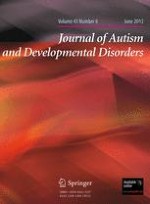01-06-2013 | Original paper
Stimulus Overselectivity in Typical Development: Implications for Teaching Children with Autism
Gepubliceerd in: Journal of Autism and Developmental Disorders | Uitgave 6/2013
Log in om toegang te krijgenAbstract
Stimulus overselectivity is widely accepted as a stimulus control abnormality in autism spectrum disorders and subsets of other populations. Previous research has demonstrated a link between both chronological and mental age and overselectivity in typical development. However, the age at which children are developmentally ready to respond to discriminations involving simultaneous multiple cues has not been established. Thirty-seven typically developing preschoolers completed a task requiring response to simultaneous cues (color and shape) to establish the age at which typically developing children can successfully respond to multiple cues. Results demonstrate that typically developing children under 36 months of age have difficulty responding to multiple cues. Implications for behavioral treatment for autism are discussed.
